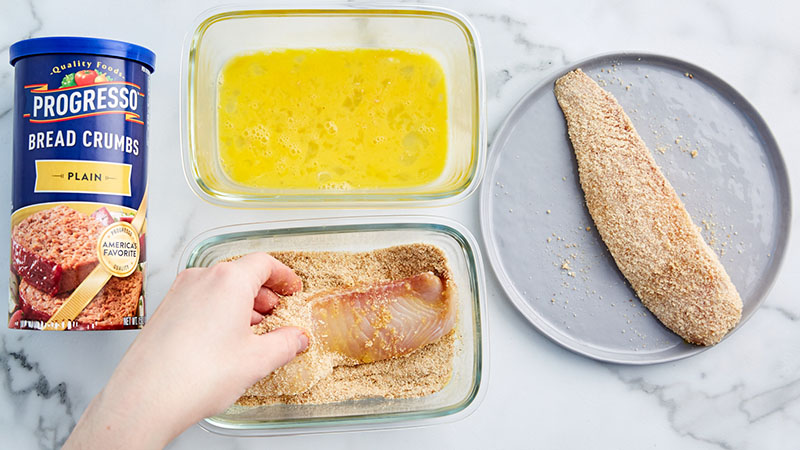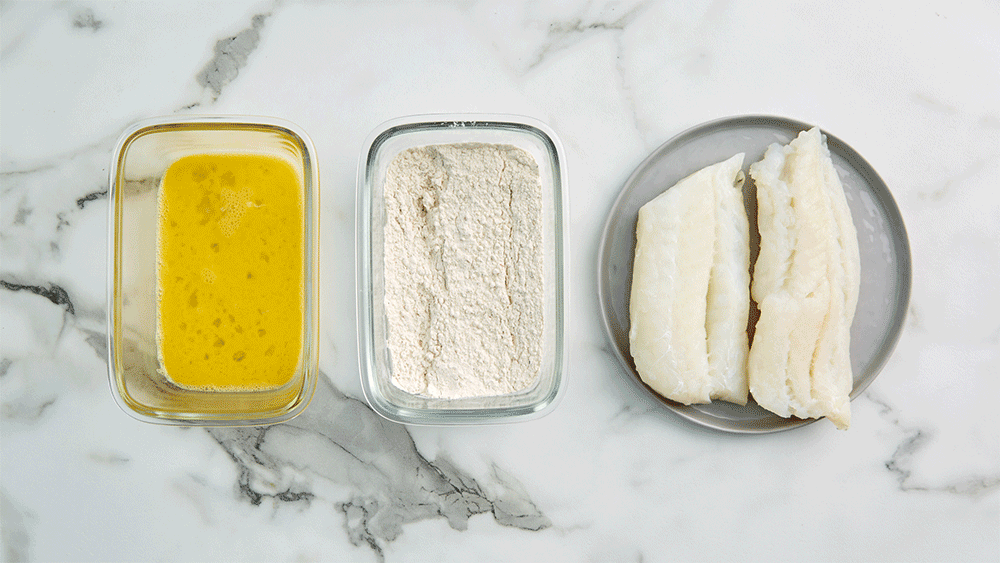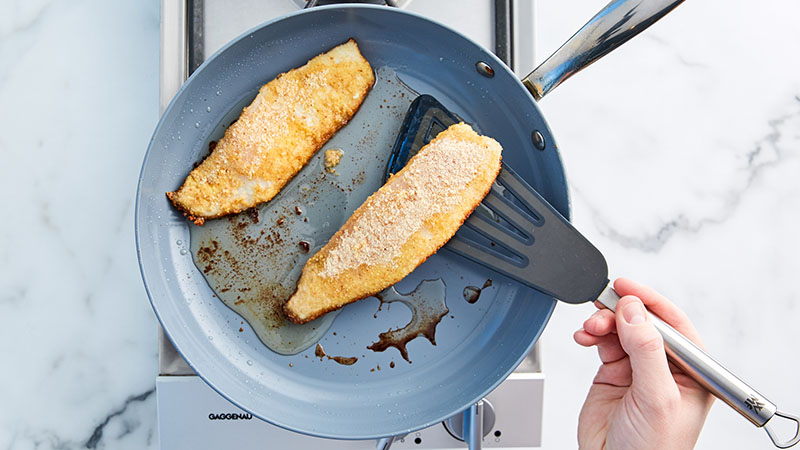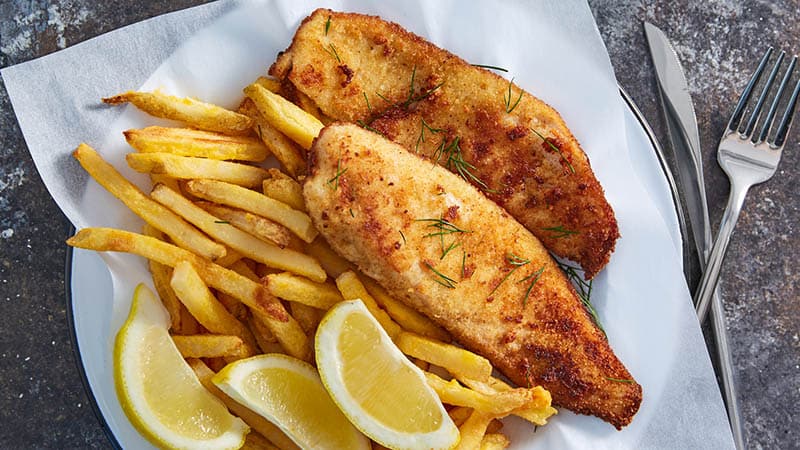What’s the Best Fish to Fry?
With so many kinds of fish available, what makes the best fish to fry? That honor goes to the lean fish of the river and sea: the best fish to fry are trout, striped bass, snapper, tilapia, perch, Dover sole and cod. Generally, if the flesh is white, that’s a good indicator that it makes a good fish for the pan. Why is that? Well, in order to keep the fish from burning, you’ll need a good coating of oil or butter in the pan. These types of lean fish benefit from those extra fats, but oilier fish such as salmon, tuna or Chilean sea bass can get pretty greasy and unappealing when pan-fried. Those fish are better on the grill or in the broiler.
Step 1: Prep the Fish
So we’ve got our nice, white fish. You can choose to fry it just as it is or dredge it in flour or breadcrumbs. Using the extra coating will give your fish more texture and body, but this is completely up to you.Coating in Crumbs

If you’re coating your fish in breadcrumbs, you can simply soak the filet in milk, buttermilk or a slightly bean egg, then dredge in breadcrumbs. You can use panko or plain breadcrumbs, and if you’re looking to add even more flavor to your fried fish, thoroughly stir seasoning into the breadcrumbs before coating. You can season fish with garlic powder, dried dill, Cajun seasoning, cayenne pepper, etc.
Dredging in Flour

If you’re going to dredge your fried fish in flour, start by dipping the filet in flour, then in egg, then finally in the flour again. The double-dredging technique will ensure that it’s crispy and nicely crusted.
Step 2: Prep the Pan
Get your pan ready for frying by pouring a few tablespoons of vegetable oil into it, preferably one with a fairly high smoke point that works well with high heat cooking. These oils include safflower, sunflower and grapeseed oil. You can also use clarified butter which will taste great on the fish. Pour in enough oil or butter so that the pan is completely coated, but not so much that the fish floats in it.
Step 3: Frying the Fish

Heat the pan until the oil slides around easily in the pan. You can also splatter a few drops of water in the pan—if the water sizzles and pops, it’s ready for your fish. Place the fish flesh side down in the pan. You want to cook the “presentation” side of the fish first. For most fillets, this generally means you want to show the diner the non-skin side. Of course, a lot of fillets in today’s market come with the skin off, in which case it wouldn’t matter which side you cook first. Once your fish is in the pan, slide a spatula gently underneath it to prevent it from sticking.
Cook the fish for three to four minutes on one side and then gently flip it over. Fried fish generally cooks at about 10 minutes per inch of thickness, but most whitefish fillets won’t be quite this thick. Use a wide spatula and turn it carefully to prevent breaking the fish. Cook for another three to four minutes or until the flesh turns pearly white and flakes easily with a fork. If the fish is coated in flour or breadcrumbs, cook until the coating is a golden-brown. The best way to tell if a piece of fish is thoroughly cooked is to check the temperature with a meat thermometer. A piece of fish needs to be heated to 145º or higher to be safe for consumption.
Carefully lift the fish out of the pan with the spatula. Plate and serve it immediately with a couple of lemon wedges and some dill.
With more people opting to eat fish once or twice a week, this cooking method provides a fast and easy way to put heart-healthy fish on the table. If you’re more of a grilled fish person, check out this list of the five best fish to grill.
